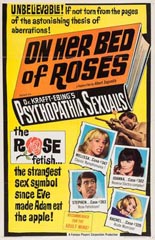
 Albert Zugsmith’s On Her Bed of Roses begins with a wordless, 15-minute prologue that rivals the surrealism of Vincent Price’s drug-fueled dream sequence in Zug’s own Confessions of an Opium Eater from 1962: In his backyard, the handsome, but shy Stephen Long (Ronald Warren) grabs a rose so hard that its thorns pierce his skin. With bloodied fist wrapped around that plucked flower, the totally clothed, totally dazed young man walks into a swimming pool and emerges at the other side, then retrieves an instrument case from the garage and gets behind the wheel of a car. Paying no attention to the rules of the road and still clutching that rose — hey, hands at 10 and 2, son! — he drives willy-nilly until he comes to a hillside, removes a rifle from the case, and picks off a few wrong-time-wrong-place motorists from his perch. When the police arrive, Stephen turns the gun on himself.
Albert Zugsmith’s On Her Bed of Roses begins with a wordless, 15-minute prologue that rivals the surrealism of Vincent Price’s drug-fueled dream sequence in Zug’s own Confessions of an Opium Eater from 1962: In his backyard, the handsome, but shy Stephen Long (Ronald Warren) grabs a rose so hard that its thorns pierce his skin. With bloodied fist wrapped around that plucked flower, the totally clothed, totally dazed young man walks into a swimming pool and emerges at the other side, then retrieves an instrument case from the garage and gets behind the wheel of a car. Paying no attention to the rules of the road and still clutching that rose — hey, hands at 10 and 2, son! — he drives willy-nilly until he comes to a hillside, removes a rifle from the case, and picks off a few wrong-time-wrong-place motorists from his perch. When the police arrive, Stephen turns the gun on himself.
Annnnnd scene!
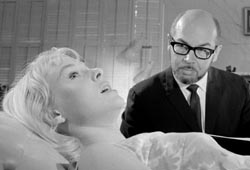 What, pray tell, triggered this college dropout (“I didn’t fit in with the rah-rah boys”) to zonk out and exercise his trigger finger? We learn the answer through flashbacks as Melissa Borden (a breathy Sandra Lynn, Zugsmith’s 1966 Movie Star, American Style or; LSD, I Hate You), tells her shrink. Not only was she Stephen’s nymphomaniac next-door neighbor, but also his kinda-sorta girlfriend. Theirs is the oddest of romances, if Roses can be called that — after all, its alternate title comes from the psychology text from which it is loosely based, Psychopathia Sexualis. That classic 19th-century study on deviant sex was written by Dr. Richard von Krafft-Ebing, here portrayed by actual psychologist Dr. Lee Gladden (who plays himself in 1965’s The Incredible Sex Revolution, also written and directed by Zugsmith), to whom Melissa spills all secrets.
What, pray tell, triggered this college dropout (“I didn’t fit in with the rah-rah boys”) to zonk out and exercise his trigger finger? We learn the answer through flashbacks as Melissa Borden (a breathy Sandra Lynn, Zugsmith’s 1966 Movie Star, American Style or; LSD, I Hate You), tells her shrink. Not only was she Stephen’s nymphomaniac next-door neighbor, but also his kinda-sorta girlfriend. Theirs is the oddest of romances, if Roses can be called that — after all, its alternate title comes from the psychology text from which it is loosely based, Psychopathia Sexualis. That classic 19th-century study on deviant sex was written by Dr. Richard von Krafft-Ebing, here portrayed by actual psychologist Dr. Lee Gladden (who plays himself in 1965’s The Incredible Sex Revolution, also written and directed by Zugsmith), to whom Melissa spills all secrets.
Those include sexual abuse by her father (“A Taste of Honey” songwriter Ric Marlow) and having her mom (Barbara Hines, The Three Stooges Meet Hercules) steal the boys Melissa brings home to bang. Stephen has “mother troubles” of his own, being smothered by his domineering mom (Regina Gleason, Revenge of the Cheerleaders). Melissa tells the doctor it’s her belief that she and Stephen could have saved one another, and the funny thing is, you want to see them do just that. However, going into the film at Stephen’s suicide, we know that’s futile, so we settle for wanting to see how events A and B and C led to the tragic Z.
Now, don’t mistake that engagement for eminence; we’re still talking about a Zugsmith production — one whose narrative halts in the middle to make way for extended scenes of nude dancing just for the sake of nude dancing (similar to his “hot” cut of 1960’s Sex Kittens Go to College). His dialogue, when he gets around to it, remains histrionic and hysterical, such as the lines exchanged between our Cupid-struck teens during their meet-cute:
Melissa: “Do you like peanut butter?”
Stephen: “Gosh, how’d you know? I like it best on apples!”
Melissa: “I like grape jelly on mine!”
That’s true love. —Rod Lott

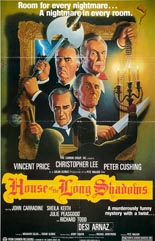
 While on a book tour in Great Britain, author Kenneth Magee (Desi Arnaz Jr., 1977’s
While on a book tour in Great Britain, author Kenneth Magee (Desi Arnaz Jr., 1977’s 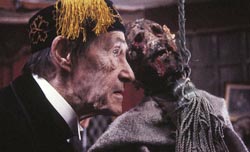
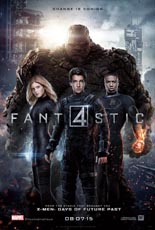
 In the
In the 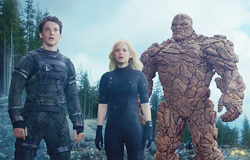
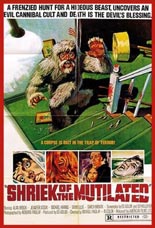
 In
In 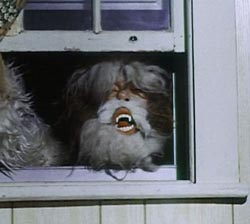
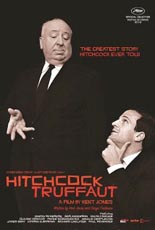
 However one pulls off a successful documentary about the making of a book, Kent Jones has done it with Hitchcock/Truffaut. Borrowing its title from the
However one pulls off a successful documentary about the making of a book, Kent Jones has done it with Hitchcock/Truffaut. Borrowing its title from the 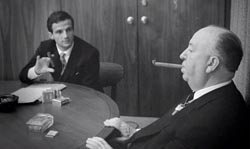 Although film cameras ironically were not present for the men’s talks, an audio recorder was; Jones lucks into having their actual voices at his show-don’t-tell disposal, along with a smattering of behind-the-scenes photographs. Without these, the doc would lose what makes it special. He doesn’t rely solely on his subjects, either, opening the floor to such celebrity admirers as Martin Scorsese, David Fincher and Wes Anderson, all avowed fans of the classic book, which has inspired and informed work of their own.
Although film cameras ironically were not present for the men’s talks, an audio recorder was; Jones lucks into having their actual voices at his show-don’t-tell disposal, along with a smattering of behind-the-scenes photographs. Without these, the doc would lose what makes it special. He doesn’t rely solely on his subjects, either, opening the floor to such celebrity admirers as Martin Scorsese, David Fincher and Wes Anderson, all avowed fans of the classic book, which has inspired and informed work of their own.